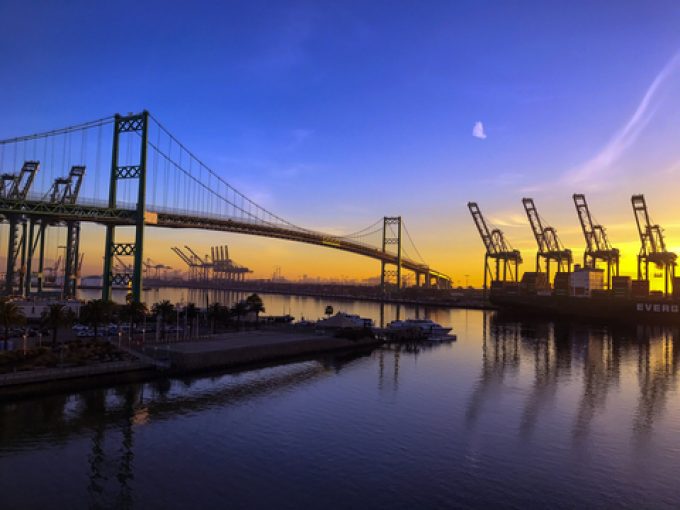Another strong month for US ports as container flows continue to rise
The main US ports enjoyed another stellar month in March, according to new figures from ...

Container imports through the US west coast San Pedro Bay ports of Los Angeles and Long Beach are booming – a trend that looks set to continue, with some peak season volumes from Asia expected to arrive earlier than usual this year.
Moreover, transpacific shippers are hedging their bets on the outcome of the US east coast new labour contract negotiations by increasing the percentage of import cargo they intend to move via west coast ports.
The port of Los Angeles processed 781,434 teu in February, a huge 60% increase over the same month last year, and included a 64% jump in import containers, to 408,764 teu.
And at neighbouring Long Beach, terminals saw a 24.1% year-on-year increase in container throughput last month, at 674,723 teu, and a 29.4% leap in imports, to 329,850 teu.
Both hubs are well ahead of last year’s volumes, LA facilities up 35% over the two months, to 1,637,086 teu, while the Long Beach terminals reported a 20.7% rise, to 1,348,738 teu.
“Market confidence in our gateway is as strong as ever…our operational data indicates that cargo is flowing efficiently, with additional capacity available,” said port of LA executive director Gene Seroka.
“With American consumers still spending and economic indicators positive, the port is well-positioned as we move into the second quarter,” he added.
Long Beach said “cooling inflation, rising consumer confidence and an ongoing effort to recapture market share” had boosted cargo moving through the port. CEO Mario Cordero added: “Our top-notch customer service and ongoing efforts to attract business back to the west coast are paying off.”
Further indications of a demand boost on the transpacific comes in the form of a surge in the number of empty containers being repositioned back to Asia: LA loading back 239,916 teu, a 54% increase on the year before; and Long Beach returning 257,000 teu, up 45%.
“Don’t be surprised if we see peak season cargo in the west coast a little bit earlier than usual,” said Mr Seroka, “here in LA we are running at about 75% to 80% of capacity, and are ready to pivot to handle whatever comes our way.
“Importers don’t want to be the last people to shift cargo to another gateway, should market conditions change, so we are starting to see companies talking about shifting 2%, 3% or 5% of their business to different gateways to diversify a little bit.”
However, some shippers and analysts have expressed serious concerns about the ability of the San Pedro Bay ports to handle additional volumes.
But, on the sidelines of this month’s S&P Global TPM24 conference, Mr Seroka told The Loadstar he “disagreed”, as the hubs had “learned the lessons” from the heavy port congestion periods of 2021 and early 2022, and were now “much more resilient”.
Comment on this article